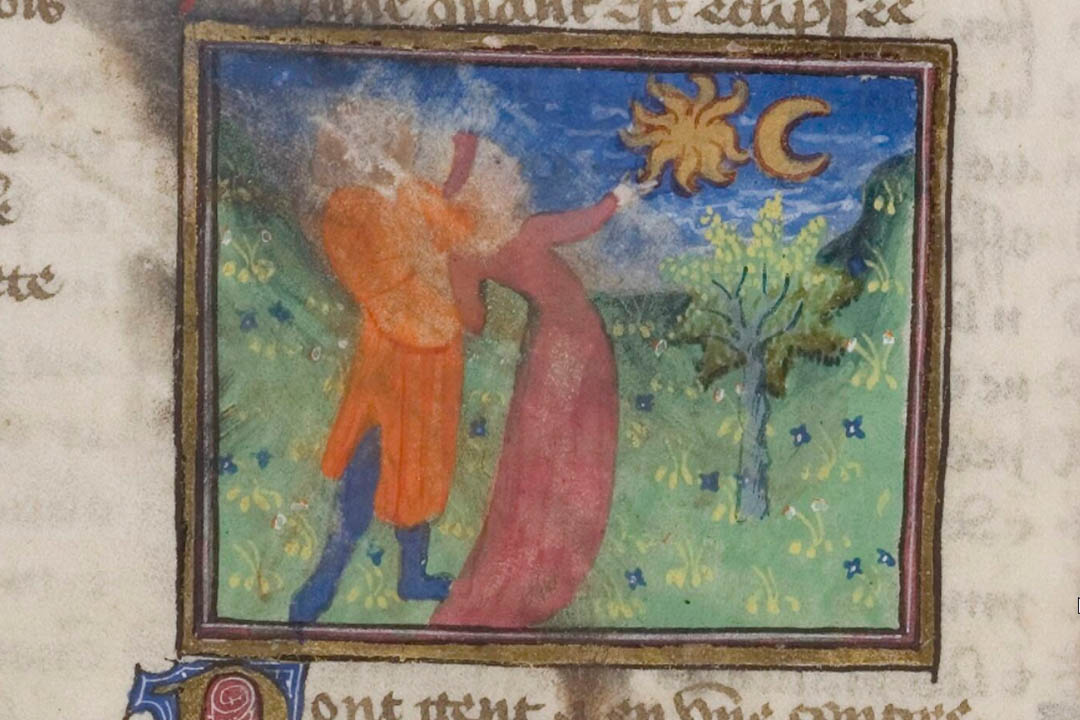
Medieval monks’ moon-watching sheds light on volcanoes and climate change
An international research team including the University of Saskatchewan (USask) has used meticulous medieval-era records scribed by monks about the colour of lunar eclipses to develop a new, deeper understanding of volcanoes and climate change.
The interdisciplinary research published today in the journal Nature examined astronomical records from monks and chroniclers across Europe, the Middle East, and Asia from the High Medieval Period (1100–1300 CE), a volcanically-active period. Of 64 lunar eclipses that occurred in Europe during that period, monks described 51, noting five were especially dark—something which can occur when dust from major volcanic eruptions is present in the stratosphere.
“This work is a really novel example of interdisciplinary research, bringing together threads of evidence from medieval history, paleoclimatology and atmospheric physics,” said Dr. Matthew Toohey (PhD), assistant professor in the Department of Physics and Engineering Physics in the USask College of Arts and Science, and co-author of the paper. “Volcanic eruptions are really important for understanding past climate variability—eclipse observations can be used to help determine the timing of past eruptions, many of which are otherwise only known of because of the chemical markers in polar ice cores.”
When volcanoes erupt, spewing ash and sulfur into the atmosphere, the resulting haze can decrease the intensity of sunlight reaching the surface, cooling global temperatures over a period of years.
“We know from previous work that strong tropical eruptions can induce global cooling on the order of roughly 1°C, over a few years,” said Dr. Markus Stoffel (PhD), University of Geneva (UNIGE) researcher and senior author on the paper. “They can also lead to rainfall anomalies with droughts in one place and floods in another.”
Led by University of Geneva paleoclimatologist Dr. Sébastien Guillet (PhD), the research team found observations of dark total lunar eclipses in the years 1110, 1172, 1229, 1258 and 1276 CE matched volcanic signals gleaned from analyzing ice cores in Greenland, providing new evidence these five events resulted from eruptions producing vast stratospheric aerosol clouds, and not from smaller local eruptions.
Why were medieval monks so attentive to the moon and lunar eclipses? In the Bible’s Book of Joel, Acts of the Apostles, and Book of Revelations, a “Blood Moon” augurs the beginning of the apocalypse. Accurate lunar observations were also key to identifying the Easter Full Moon, establishing the correct date for Easter Sunday, and all other moveable feast days of the liturgical calendar.
At USask, Toohey’s role in the research focused on translating eclipse records into estimates of when the volcanic eruptions took place—incorporating modern observations from satellite sensors and results from computer models that simulate the atmospheric spread of volcanic aerosol particles.
“The more accurately we can estimate the magnitude and timing of past eruptions, the better we can understand past climate variations and use that to test climate models that are used to predict future climate,” said Toohey.
The researchers will integrate this data into existing models to better understand the role of volcanic eruptions in the climactic shift from the relatively warm medieval period to the “Little Ice Age,” a period of prolonged cooling which saw glaciers grow and rivers freeze across Europe.
The research team also included researchers from University of Cambridge in the United Kingdom, France’s Université Clermont Auvergne, Université Paris 1 Panthéon-Sorbonne, and Université Pierre et Marie Curie, Ireland’s Trinity College Dublin, University of Bern in Switzerland, and the University of Washington, and was funded by the Swiss National Science Foundation within the CALDERA project.

